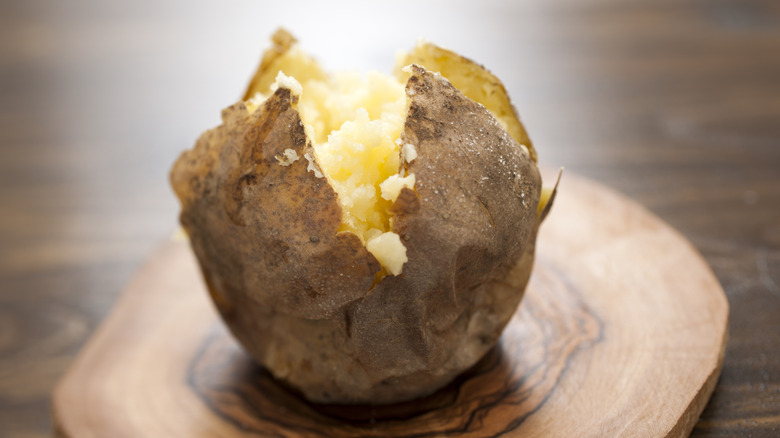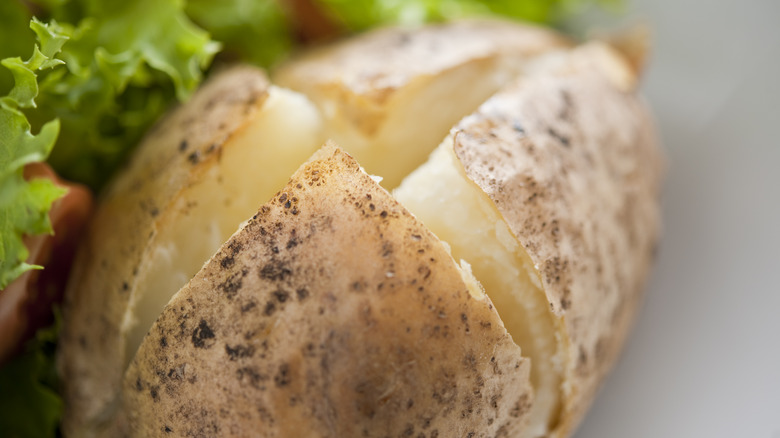Why You Should Always Score Baked Potatoes When They Come Out Of The Oven
Baking potatoes whole is one of the most straightforward and delicious ways to enjoy their earthy flavors and comforting textures. If you've ever baked a potato, you've probably prepared your spud by scrubbing its skin of dirt and poking a few holes in it with a fork before its long stint in the oven. While the only post-bake protocol most of us undertake is to slice open the potato and stuff it with our favorite garnishes, scoring your baked potatoes when they come out of the oven should become a permanent step.
Scoring is a term that refers to making small slits in food before grilling, baking, or roasting it; meat is a common recipient of this technique as evidenced by those visually appealing X-shaped markings atop a fine cut of steak. The purpose of scoring food is to provide an outlet for its moisture to escape which in turn facilitates even cooking. In the case of baked potatoes, poking holes in the raw potato with a fork is scoring because those holes allow the potato's water content to escape as vapor through the skin thereby steaming its insides.
When you score the potato once it comes out of the oven, you're allowing it to continue to release water vapor so you can maximize its texture. If you let the potato cool without scoring, any residual moisture becomes waterlogged, making for dense pulp. By scoring the potato with an X-shaped slit across the top, you'll get the fluffiest pulp.
More helpful tips for baked potatoes
Scoring is the key to the fluffiest pulp, but there are other tips to try for the ideal texture contrast and flavor upgrade. Once you've scored the baked potatoes, they'll only need a minute or two to release residual steam after which you should immediately fluff the pulp with a fork. After all, you want a steaming hot baked potato for the ultimate comfort meal.
While sour cream and cheese will provide much-needed salt to complement the potato's earthy savoriness, there's nothing better than a crispy, salted potato skin for the most decadent finish. To infuse the skin with sodium, the most effective method is to immerse the raw potato in a saltwater solution before baking it. The water will evaporate as the potato cooks while the salt crystals will remain in the skin. For crispy, crunchy skin, you can brush the potato skin with olive oil towards the end of its stint in the oven.
You can also salt the skins and oil them before baking them the same way you'd coat chopped veggies before roasting them. The oil will help the salt adhere to the skin, and coarse salt will add a delightful crunch to the crispy skin. For added flavor, you can create an herb or spice-infused oil to coat the potato skin.

